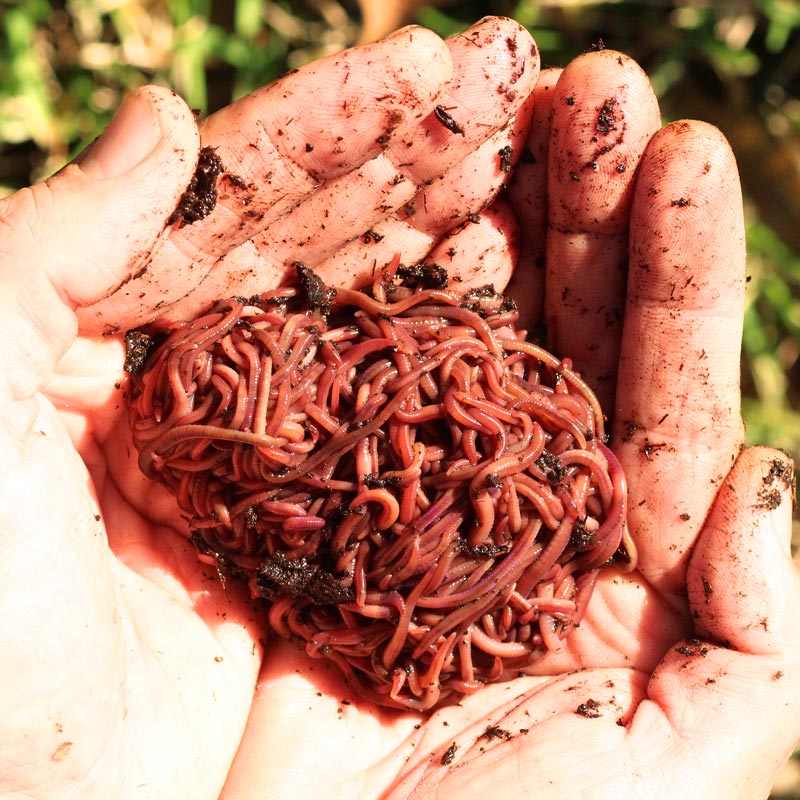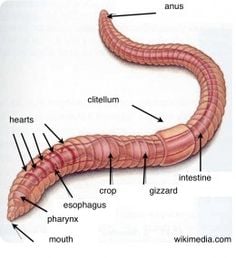Costs Quality Red Wiggler Worms - Enhance Your Yard's Fertility
Costs Quality Red Wiggler Worms - Enhance Your Yard's Fertility
Blog Article
Red Wiggler Worms Demystified: Unlocking the Tricks of Vermiculture for Greener Living and Nutrient-Rich Dirt
In the world of sustainable practices for enhancing soil top quality and promoting eco-conscious living, red wiggler worms play a crucial yet frequently forgotten role. These simple animals possess the exceptional ability to change natural waste right into nutrient-rich castings that function as a potent natural fertilizer. By diving right into the globe of vermiculture, one can discover a variety of advantages that expand far past conventional composting techniques. Understanding the details of taking care of these worms, optimizing their setting, and harnessing their castings can lead to a greener way of living and healthier soil for plants to thrive.
The Function of Red Wiggler Worms
Red Wiggler worms play an important function in composting systems by efficiently breaking down raw material into nutrient-rich castings. These voracious eaters consume a variety of natural materials, such as kitchen area scraps, yard waste, and paper items. As they feed, the worms' gastrointestinal processes break down the organic matter right into a penalty, dark, and nutrient-dense product called worm spreadings or vermicompost.
The castings generated by Red Wiggler worms are highly helpful for dirt health and wellness and plant development. They are abundant in essential nutrients like potassium, phosphorus, and nitrogen, which are crucial for sustaining healthy and balanced plant growth. Furthermore, worm castings include valuable microorganisms and enzymes that assist enhance soil structure, rise water retention, and enhance nutrient uptake by plants.
Advantages of Vermicomposting

In addition, vermicompost, the nutrient-rich final result of vermicomposting, acts as an exceptional natural fertilizer and soil conditioner. It improves dirt structure, improves dirt aeration, and enhances dirt wetness retention. These residential properties add to healthier plants with stronger origin systems and much better resistance to parasites and illness. Vermicompost additionally improves the dirt with crucial nutrients like nitrogen, phosphorus, and potassium, advertising plant growth and overall soil fertility.
Additionally, vermicomposting assistances lasting gardening techniques by supplying a chemical-free and all-natural option to synthetic plant foods. Red Wiggler Worms. This eco-friendly strategy not just improves the soil yet likewise helps minimize dependence on damaging chemicals, advertising a greener and more sustainable way of horticulture
Establishing Up a Worm Bin
When developing a worm container for vermicomposting, correct setup is vital to ensure the success of the composting process. The first step in setting up a worm container is picking a suitable container.
After including the bedding, introduce the red wiggler worms to the bin. It is advised to begin with a handful of worms and slowly enhance as they multiply. The worms should then be offered with food scraps such as vegetables and fruit peels, coffee premises, and eggshells. It is necessary to avoid adding meat, dairy, oily, or salted foods to prevent attracting pests and developing undesirable odors.
On a regular basis keep an eye on the wetness levels and temperature in the worm bin to guarantee optimal problems for the worms. Home Page With proper setup and upkeep, the worm bin will successfully convert organic waste right into nutrient-rich compost for your plants and garden.
Collecting Worm Spreadings
To effectively collect nutrient-rich worm spreadings from your vermicomposting system, a systematic harvesting approach is crucial. When it comes time to collect the worm castings, there are a couple of key steps to comply with to make sure an effective process. Stop including fresh food scraps to one side of the worm container for a couple of weeks prior to gathering. This urges the worms to move sideways with fresh bed linen and food, making it easier to dig the spreadings from the various other side.

Troubleshooting Common Issues
Recognizing and resolving typical difficulties that might occur throughout the vermicomposting procedure is essential for maintaining a effective and healthy worm bin. One usual concern that vermicomposters encounter is overfeeding. Including excess food scraps can result in an accumulation of dampness and acidity in the worm container, possibly hurting the worms. To stop this, feed the worms in small amounts, ensuring that the food scraps are sufficiently broken down prior to including more. An additional problem is undesirable odors originating from the worm bin. Foul smells suggest anaerobic conditions, usually triggered by overwatering or inadequate air flow. To treat this, adjust the moisture levels by adding completely dry bedding products like shredded newspaper or cardboard and boost aeration by turning the bed linen consistently.
In addition, if the worm population is declining or the worms show up harmful, it could be as a result of ecological stress factors such as severe temperatures or pH levels. Monitoring these aspects and making needed modifications is essential for the well-being of the worms. By fixing these usual issues without delay, vermicomposters can ensure a smooth and effective vermicomposting process while keeping a growing worm population.

Verdict
In verdict, red wiggler worms play an important role in vermiculture by breaking down organic issue into nutrient-rich soil. Establishing up a worm bin is crucial for successful vermiculture, and collecting worm spreadings provides beneficial compost for gardening.
As they feed, the worms' digestive processes damage down the organic issue into a fine, dark, and nutrient-dense product known as worm spreadings or vermicompost.
The spreadings produced by Red Wiggler worms are very valuable for soil health and wellness and plant growth. Including excess food scraps can lead to a buildup of dampness and acidity in the worm bin, possibly harming the worms.Furthermore, if the worm populace is decreasing or the worms appear harmful, it could be due to ecological stressors such as severe temperature levels or pH levels. Setting up a worm bin is important for successful vermiculture, and collecting worm spreadings supplies useful garden compost click this for gardening.
Report this page